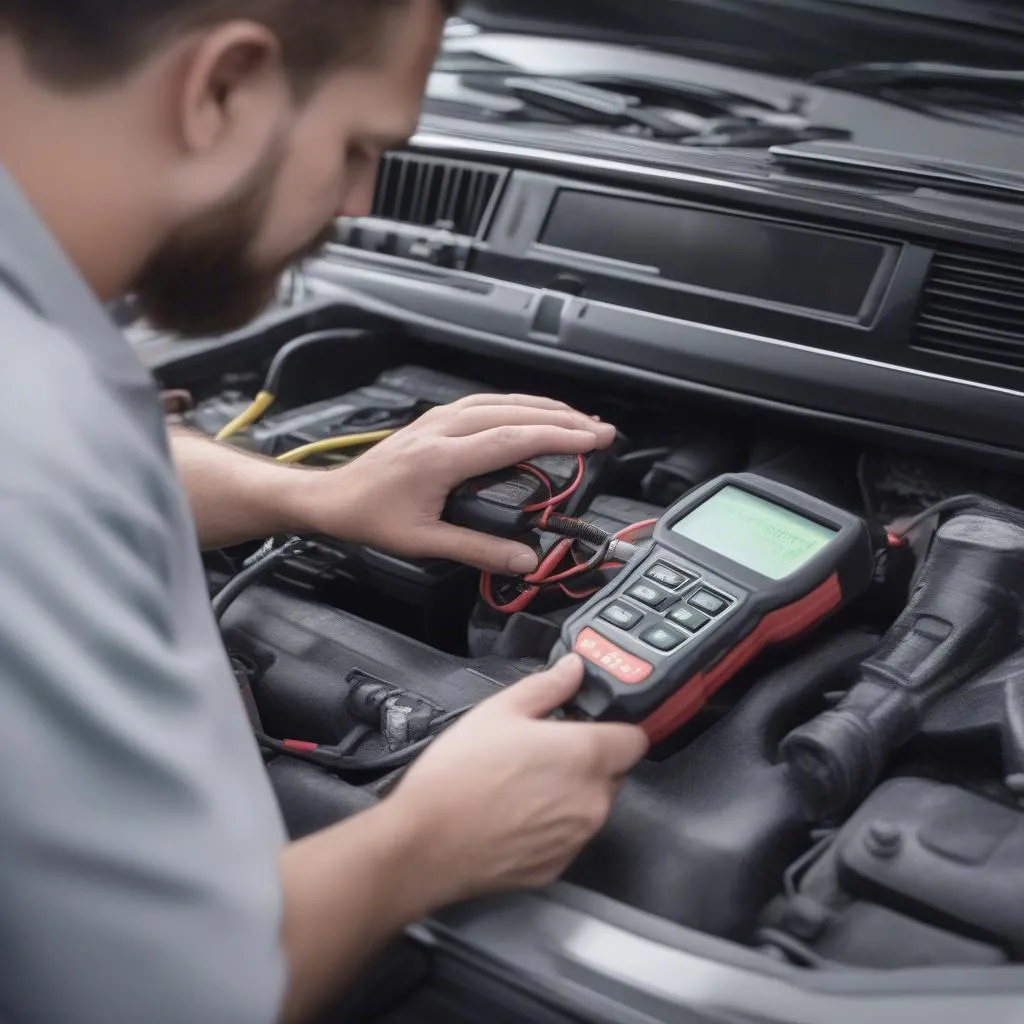Imagine this: you’re driving down the road, and suddenly your car starts to shift erratically. You’re not sure what’s going on, but you suspect it might be a problem with the transmission. How do you figure out what’s wrong? This is where checking transmission codes comes in.
What Does Checking Transmission Codes Mean?
Checking transmission codes is a crucial step in diagnosing transmission problems. Modern vehicles are equipped with sophisticated onboard computers that monitor various systems, including the transmission. When a problem occurs, the computer stores a fault code that can provide valuable insights into the issue.
These codes are more than just a series of numbers or letters; they are a language that tells you precisely what’s going on with your transmission. Think of them as diagnostic clues, leading you toward the root cause of the problem.
How to Check Transmission Codes
There are several ways to check transmission codes:
1. Using a Scan Tool:
A scan tool is a device that plugs into your car’s OBD2 port (usually located under the dashboard). This port acts as a communication gateway between your car’s computer and the scan tool.
 OBD2 Scan Tool
OBD2 Scan Tool
These scan tools are relatively inexpensive and readily available at most auto parts stores. Some scan tools are basic and only read codes, while others provide more advanced features, like live data monitoring and clearing codes.
2. Using a Smartphone App:
Several smartphone apps allow you to check transmission codes. These apps connect to your car’s OBD2 port using a Bluetooth adapter.
These apps are convenient, but they may not offer the same level of functionality as dedicated scan tools.
3. Visiting a Mechanic:
If you’re not comfortable checking transmission codes yourself, you can always take your car to a qualified mechanic. Mechanics have the tools and expertise to diagnose transmission problems efficiently.
Understanding Transmission Codes
Once you have the codes, you need to interpret them. There are several online resources available, including websites and forums, that offer detailed code definitions.
Common Transmission Codes and Their Meaning
Here are some common transmission codes and their possible causes:
P0700: Transmission Control System Malfunction: This code indicates a general problem with the transmission control system.
P0730: Incorrect Gear Ratio: This code suggests a problem with the gear ratio, meaning the transmission is not shifting properly.
P0740: Torque Converter Clutch Circuit Malfunction: This code often points to a problem with the torque converter clutch, which is responsible for transmitting power to the wheels.
P0750: Shift Solenoid A Malfunction: This code suggests a fault with the shift solenoid, which controls the flow of hydraulic fluid to the transmission.
P0770: Shift Solenoid B Malfunction: Similar to the P0750 code, this indicates a problem with a different shift solenoid.
What to Do After Checking Transmission Codes
Once you’ve checked your transmission codes, it’s time to take action. The next steps will depend on the specific codes and the symptoms your car is exhibiting.
Here are some things you can do:
-
Research the Codes: Use online resources to understand the meaning of the codes and potential causes.
-
Clear the Codes: If the problem is minor and intermittent, clearing the codes might be sufficient.
-
Perform Basic Maintenance: Check fluid levels and ensure the transmission fluid is clean.
-
Consult a Mechanic: If the problem persists or the codes indicate a serious issue, it’s time to contact a mechanic.
FAQs About Checking Transmission Codes
Q: Can I check transmission codes with an OBD2 reader?
A: Yes, most OBD2 readers can read transmission codes. However, some basic scanners may not be able to access all transmission-related codes.
Q: Can I fix transmission problems myself?
A: Some minor transmission issues might be fixed with simple repairs. However, if the problem is severe or you’re unsure of what you’re doing, it’s best to consult a mechanic.
Q: What are the signs of a bad transmission?
A: Some signs of a bad transmission include:
- Slipping gears: The transmission might struggle to shift smoothly, resulting in slipping or jerking.
- Hard shifting: The transmission might shift abruptly and with a clunk.
- Noises: You might hear unusual noises coming from the transmission, such as grinding or whining.
Q: How much does it cost to repair a transmission?
A: The cost of transmission repairs can vary greatly depending on the severity of the problem and the make and model of your vehicle.
Need Help with Transmission Diagnosis?
If you’re having trouble with your transmission, don’t hesitate to reach out to us. We have a team of experienced technicians who can help you diagnose and repair transmission problems.
Conclusion
Checking transmission codes is an essential step in troubleshooting transmission problems. By understanding the codes, you can identify the root cause of the issue and take the necessary steps to address it. If you’re not comfortable working on your car yourself, don’t hesitate to seek professional help.
Remember, keeping your transmission healthy is crucial for a smooth and enjoyable driving experience.
Want to learn more about diagnostics tools? Check out our other articles:
- Scan Tool to Read Transmission Codes
- Does the OBD2 Torque Scan Tool Check ABS Lights?
- Will the Innova 3160 Scan Tool Read Transmission Codes?
- What Does Reading Codes with a Scan Tool in Real-Time Mean?
- Can a Scan Tool Diagnose a Bad Transmission?
For assistance with diagnosing and fixing transmission problems, contact us via Whatsapp: +84767531508. Our experts are available 24/7.